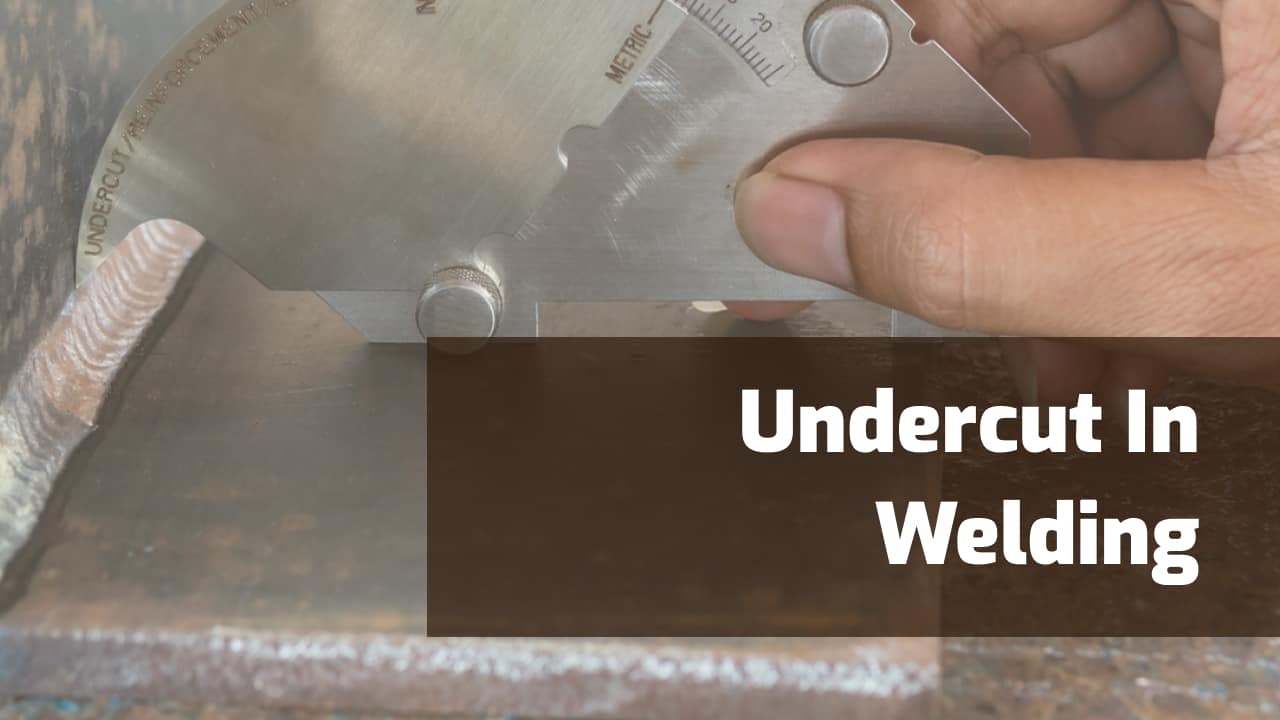Preventing Weld Undercut: Proven Techniques Every Welder Need To Know
Preventing Weld Undercut: Proven Techniques Every Welder Need To Know
Blog Article
Crucial Tips for Welders: Preventing Undercut Welding and Ensuring Stronger Weld Joints
In the world of welding, achieving durable and strong weld joints is the foundation of creating premium job. One typical difficulty that welders typically come across is undercut welding, which can jeopardize the integrity of the weld joint.

Understanding Undercut Welding
Undercut welding is a typical welding problem that occurs when the weld steel falls short to properly fill the groove and results in a groove-like depression along the weld grain. This defect weakens the weld joint, making it prone to fracturing and failing under anxiety. Damaging can be triggered by various elements, including excessive welding current, high welding speed, inappropriate electrode angle, inaccurate electrode size, and poor welding technique.
One of the main reasons for undercut welding is an imbalance between the welding present and the welding rate. If the welding current is expensive or the welding rate is as well fast, the weld metal might not effectively load the groove, leading to undercutting. Furthermore, utilizing an electrode that is also huge can lead to a comparable outcome, as the excess steel can not properly flow right into the groove.
To protect against undercut welding, welders ought to ensure they are using the right welding specifications, keep an appropriate electrode angle, pick the suitable electrode size, and method appropriate welding strategies. By attending to these variables, welders can decrease the risk of undercutting and create more powerful, much more dependable weld joints.
Appropriate Welding Method
Effective welding technique plays a critical role in making certain the quality and stability of weld joints. One basic element of correct welding method is preserving the proper angle and distance in between the welding gun and the work surface.
Furthermore, a constant and constant hand activity is crucial for producing solid and durable weld joints. Welders should go for smooth, uniform movements to make certain also circulation of the weld material. Appropriate adjustment of the welding weapon and filler material is likewise essential to achieving optimum infiltration and blend.
In addition, regulating the heat input and selecting the ideal welding specifications based on the product being bonded are vital consider attaining premium welds - Preventing weld undercut. Welders should comply with the suggested setups provided by welding procedure requirements and readjust them as required based on the particular requirements of the job. By understanding appropriate welding strategies, welders can considerably improve the stamina and integrity of their weld joints
Choosing the Right Electrode
Maintaining the appropriate angle and distance in between the welding gun and the work surface is basic when considering the value of picking the ideal electrode in welding applications. The selection of electrode plays a critical role in figuring out the high quality and strength of the weld joint. Electrodes are available in different kinds, each designed for certain purposes and products.
Firstly, picking the proper electrode size is essential. Thinner electrodes are ideal for welding thin materials, while thicker electrodes are much better for thicker materials and higher heat applications. Matching the electrode size to the density of the workpiece helps accomplish a well balanced weld.
Secondly, comprehending the product make-up of the electrode is essential. Different electrodes are developed for welding particular products like steel, stainless-steel, light weight aluminum, or cast iron. Making use of the proper electrode product ensures good combination and lessens the danger of flaws in the weld.
Finally, taking into consideration the welding placement and strategy is critical when picking the electrode kind. Certain electrodes are better matched for above or vertical welding positions, while others function well for level or horizontal positions. Selecting the appropriate electrode based upon the welding method enhances the total weld top visit their website quality and stability.
Preparing the Base Metal
To ensure an effective welding procedure, what first actions should be taken when preparing the base metal for welding? Furthermore, any existing weld product or residue from previous welding must be removed to make certain a tidy surface area for the new weld.

Performing Post-Weld Examinations

After carrying out these evaluations, welders have to compare the results against market requirements and job needs to make certain that the weld joint meets all necessary this link criteria. Any type of variances or insufficiencies discovered during the post-weld inspection ought to be quickly dealt with through suitable corrective steps to guarantee the weld's integrity. By diligently performing post-weld inspections and promptly addressing any kind of concerns, welders can maintain the high quality and dependability of their work, inevitably adding to the safety and longevity of the welded structures.
Conclusion

In verdict, stopping undercut welding and making sure stronger weld joints require a mix of appropriate welding method, choosing the appropriate electrode, preparing the base metal correctly, and performing post-weld assessments. By understanding the reasons of undercut welding and implementing the essential safety measures, welders can produce high-grade weld joints that satisfy industry requirements and ensure the architectural integrity of the bonded components.
Undercut welding is an usual welding defect that happens when the weld metal falls short to properly fill up the groove and results in a groove-like depression along the weld bead (Preventing weld undercut). Undercutting can be caused by numerous elements, consisting of excessive welding current, high welding rate, improper electrode angle, wrong electrode size, and bad welding strategy
One of the main reasons for undercut welding is an inequality between the welding present and the welding rate. If check that the welding current is too high or the welding speed is as well quickly, the weld metal may not adequately fill up the groove, leading to damaging.Keeping the correct angle and distance between the welding weapon and the work surface is basic when considering the value of picking the appropriate electrode in welding applications.
Report this page